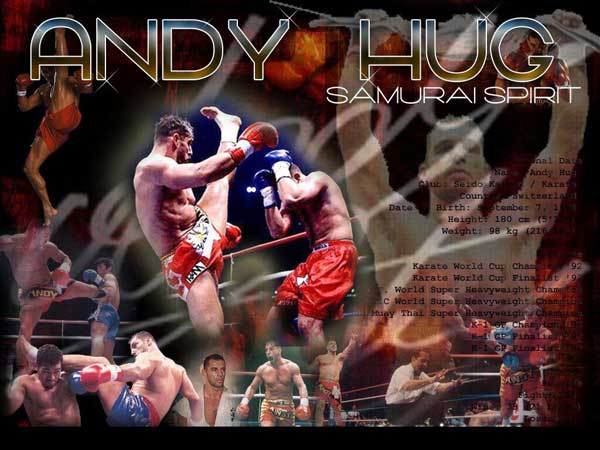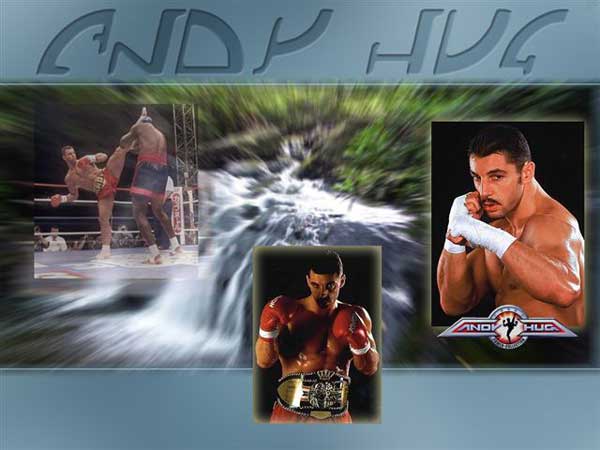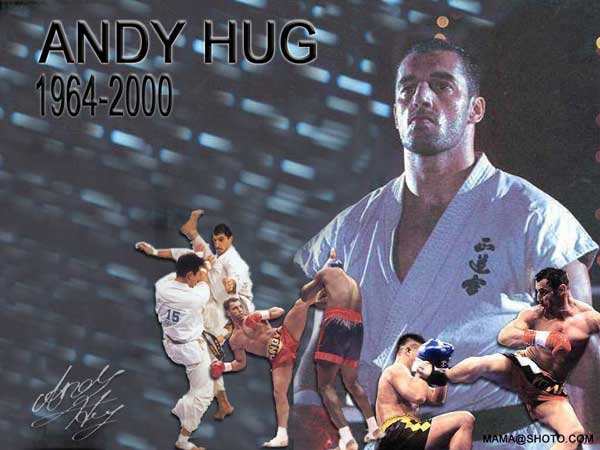One of the best Kyokushin fights ever
Peter Smit VS Kurosawa
{google}-7069056831493262492{/google}
Tribute aan Peter Smit
{youtube}sBQn9cxFjwo{/youtube}
Peter Smit vs Kiatsonkrit
{youtube}nNdOq_92bZY{/youtube}
Peter Smit vs Kiatsonkrit Fight 2
{youtube}w9quIob2RCs{/youtube}
Peter Smit vs Kiatsonkrit 1990
{youtube}kAYkFscC77o{/youtube}

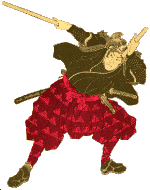 Waarom de naam Musashi?
Waarom de naam Musashi?
Het is de gewoonte in het Kyokushinkai-karate dat een Kyokushinkai-school de naam krijgt van een bekende periode in Japan, een naam waar wat achter zit of de naam van een bekend iemand uit een bepaalde periode.
Ik, Sjaak van de Velde, heb voor de naam "Musashi" gekozen omdat deze samoerai uit de zestiende eeuw een bepaalde filosofie beschrijft welke mij zeer aanspreekt. Na zijn boek gelezen te hebben kreeg ik steeds meer interesse in de filosofie van Musashi. Ook Sosai Masutatsu Oyama werd door Musashi geïnspireerd. Mede door het lezen van GO RIN NO SHO is Sosai Mas Oyama de bergen in getrokken en begonnen met zijn "mountain training"
Wie was Miyamoto Musashi?
Miyamoto Musashi werd in 1584 geboren en was op jonge leeftijd al èèn van de bekendste samoerai's van Japan. Hij werd door vele latere samoerai's als voorbeeld genomen en verschillende recente boeken en films zijn op zijn leven geïnspireerd.
Op dertigjarige leeftijd had hij al meer dan zestig gevechten gewonnen en werd door iedereen als onoverwinnelijk beschouwd. Daarom besloot hij de rest van zijn leven te besteden aan het vervolmaken van zijn strategie. Hij werd een beroemde leraar (Sensei) in het Kendo, het Japanse zwaard vechten.
Tegen het eind van zijn leven trok hij zich terug in een grot op de berg Kyushu en een paar weken voor zijn dood vatte hij zijn levensfilosofie samen in een klein boekje, Go Rin No Sho (een boek van vijf ringen). Deze korte en zeer praktische tekst bevat de kern van zijn Strategie van het zwaard vechten en het leven. Deze strategie is zeer beïnvloed door Zen en de oorspronkelijke Shinto religie. Er is een vertaling van het boekje Go Rin No Sho, deze heet De strategie van de Samoerai. Dit boekje is voor iedereen op verschillende niveaus te lezen en hoe meer men er in leest, hoe meer men zal vinden. De woorden die hij schreef waren zijn laatste wil, de sleutel tot de buitengewone weg die hij zelf is gegaan.
 Go Rin No Sho
Go Rin No Sho
"...Vele jaren heb ik de weg van de strategie beoefend die Ni To ichi Ryu (een school - twee zwaarden) wordt genoemd, en nu zal ik deze voor de eerste keer in geschreven vorm uitleggen. Het is de periode van de eerste tien dagen van de tiende maand van het twintigste jaar van Kanei (1645). Ik heb de berg Iwato van Higo inKyushu beklommen om de hemel eer te betuigen, Kwannon, de god van het mededogen te aanbidden en voor de Boeddha neer te knielen. Ik ben een samoerai uit de provincie Harima, Shinmen Musashi No Kami Fujiwara No Genshin, zestig jaar oud.
Vanaf mijn jeugd ging mijn hart uit naar de weg van de strategie. Mijn eerste duel vond plaats toen ik dertien jaar was; ik versloeg Arima Kihei, een strateeg van de shinto school. Toen ik zestien was versloeg ik de bekwame strateeg Tadashima Akiyama.Toen ik eenentwintig was vertrok ik naar de hoofdstad en ontmoette allerlei verschillende strategen zonder ooit een van de vele gevechten te verliezen. Daarna trok ik van provincie naar provincie en duelleerde met strategen van verschillende scholen en in de meer dan zestig gevechten heb ik altijd gewonnen. Dit gebeurde tussen mijn dertiende en mijn negenentwintigste jaar.
Toen ik dertig jaar werd, keek ik terug op het verleden. De voorafgaande overwinningen waren niet te danken aan hot feit dat ik de strategie werkelijk meester was. Misschien was het een natuurlijke bekwaamheid of het bevel van de hemel, of was de strategie van de andere scholen minderwaardig. Daarna studeerde ik van 's morgens tot 's avonds, op zoek naar het beginsel, en toen ik vijftig was begon ik te beseffen wat de weg van de strategie inhield.
Sindsdien heb ik geleefd zonder een bepaalde Weg te volgen.Met de kracht van de strategie beoefende ik vele kunsten en vaa-digheden - al die dingen zonder leraar. Bij het schrijven van dit boek gebruikte ik niet de leer van Boeddha of van Confucius, noch de oude oorlogskronieken of de boeken over gevechtskunsten. Ik pakte mijn penseel om de ware geest van deze Ichi school uit te leggen, zoals die weerspiegeld wordt in de weg van de hemel en Kwannon. Het is nu midden in de nacht, de tiende dag van de tiende maand, het uur van de tijger (3 - 5 uur 's nachts) ... "
De Calligrafie links is gemaakt door Miyamoto Musashi en representeert "Senki" (War Spirit).Vrij vertaald betekent het: "De maan in de koude stroom als een spiegel".
De overige hoofdstukken van het boek zijn
(in het engels) te lezen via deze link:
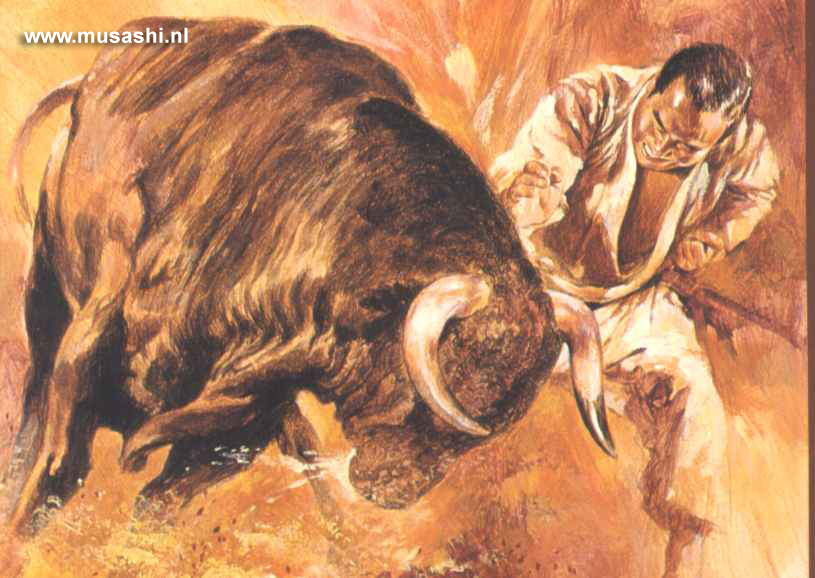
Masutatsu Oyama
The Man The Legend
This is the History of one of the Greatest Martial Artist whoever lived. He was a legend in his own time.
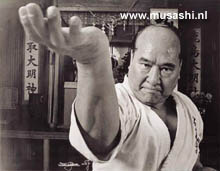 De stichter (Sosai) van het Kyokushinkai karate, Masutatsu Oyama, werd geboren als Yong-I-Choi in Qa-Ryong-Ri Yong-chi-Myo'n Chul Na Do, een dorp niet ver van Gunsan in Zuid-Korea op 27 juli 1923. Hij was 4e zoon of Sun Hyung uit een familie die bestond uit 6 jongens en 1 meisje. Op jonge leeftijd verhuisde Yong-I-Choi naar zijn zus die leefde op een ranch in Manchuria, een plaatsje in Zuid China. Yong-I-Choi had een beschermde jeugd en hij moest iedere dag 6 miles lopen naar school over een smal paadje over een heuvel naar Yongree Primary School. Hij was daar één van de 400 leerlingen. School vond hij niks omdat hij niet van studeren hield.
De stichter (Sosai) van het Kyokushinkai karate, Masutatsu Oyama, werd geboren als Yong-I-Choi in Qa-Ryong-Ri Yong-chi-Myo'n Chul Na Do, een dorp niet ver van Gunsan in Zuid-Korea op 27 juli 1923. Hij was 4e zoon of Sun Hyung uit een familie die bestond uit 6 jongens en 1 meisje. Op jonge leeftijd verhuisde Yong-I-Choi naar zijn zus die leefde op een ranch in Manchuria, een plaatsje in Zuid China. Yong-I-Choi had een beschermde jeugd en hij moest iedere dag 6 miles lopen naar school over een smal paadje over een heuvel naar Yongree Primary School. Hij was daar één van de 400 leerlingen. School vond hij niks omdat hij niet van studeren hield.
Eigenlijk speelde hij veel liever hockey, of ging hij zwemmen of vissen. Rond zijn 9e jaar kwam hij voor het eerst in aanraking met "the Martial Way" toen hij begon met het leren van de zuidelijke Chinese vorm van Kempo, gekend als "Eighteen Hands" of "Achttien handen". Zijn leraar was Mr. Yi die tijdens die periode op zijn boerderij werkte. Mas Oyama trainde met Mr. Yi voor ongeveer 2 jaar; en bereikte de graad van Shodan.
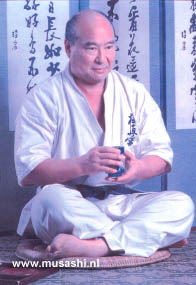 Nadat Mas Oyama terugkeerde naar Korea hij was toen 12, zette hij zijn training voort met de Koreaanse martial art gekend als Taiken of Chabi. Deze Koreaanse sport was een mengeling van Kempo, en overeenkomsten vertoonde met Kung Fu en Ju Jitsu. In 1938, op 15-jarige leeftijd, vertrok Mas Oyama naar Japan om daar als piloot te trainen - zoals Bismarck, zijn idool in die tijd - aan het Yamanashi Youth Aviation Institute. Overleven op zichzelf op die leeftijd bleek echter moeilijker dan hij dacht, zeker als Koreaan in Japan, en de vliegopleiding viel al snel in het water.
Nadat Mas Oyama terugkeerde naar Korea hij was toen 12, zette hij zijn training voort met de Koreaanse martial art gekend als Taiken of Chabi. Deze Koreaanse sport was een mengeling van Kempo, en overeenkomsten vertoonde met Kung Fu en Ju Jitsu. In 1938, op 15-jarige leeftijd, vertrok Mas Oyama naar Japan om daar als piloot te trainen - zoals Bismarck, zijn idool in die tijd - aan het Yamanashi Youth Aviation Institute. Overleven op zichzelf op die leeftijd bleek echter moeilijker dan hij dacht, zeker als Koreaan in Japan, en de vliegopleiding viel al snel in het water.
Hij zette echter wel zijn martial arts training voort met judo en boksen. Toen hij naar Japan migreerde, werd hij onder druk gezet om een Japanse naam te kiezen. Hij koos Oyama wat "grote berg" betekende. Op een dag merkte hij een student op die Okinawa Karate aan het trainen was en zijn interesse hiervoor was zo groot dat hij zich aanmeldde als student bij de dojo van Ginchin Funakoshi.
Toen Mas Oyama Gichin Funakoshi ontmoette, de man die het moderne karate in 1916 van Okinawa naar Japan bracht en een stijl ontwikkelde nu gekend als Shotokan Karate, was hij zeer onder de indruk. Mas Oyama oefende intens voor een lange tijd in de dojo van Funakoshi aan de Takushoku University. Zijn vaardigheden en vorderingen waren van dien aard dat hij op de leeftijd van 17 jaar al bevorderd werd tot Nidan (2e dan),
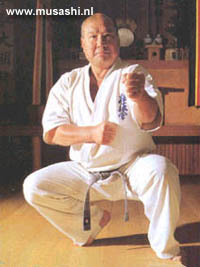 Wanneer Mas Oyama als 20-jarige dienst neemt in het Japanse leger is hij reeds Yondan (4e Dan) in het Shotokan karate, een ongelofelijke prestatie. Vanaf dat moment ging Mas Oyama zich ook bekwamen in het Judo, een sport waar hij in minder dan 4 jaar de Yondan graad behaalde. De eerst periode na de westerse overwinning op Japan is voor Mas Oyama, en met hem voor vele Japanners, vooral ook mentaal een moeilijke periode. In die periode ontmoet hij So Nei Chu. Deze mede-Koreaan, levend in Japan, is een autoriteit in de wereld van de Martial Arts en, naast zijn fysieke, vooral bekend om zijn geestelijk kracht. Tevens ontmoet hij Eji Yoshikawa, de schrijver van het boek Miyamoto Musashi, gebaseerd op Japans bekendste Samurai krijger.
Wanneer Mas Oyama als 20-jarige dienst neemt in het Japanse leger is hij reeds Yondan (4e Dan) in het Shotokan karate, een ongelofelijke prestatie. Vanaf dat moment ging Mas Oyama zich ook bekwamen in het Judo, een sport waar hij in minder dan 4 jaar de Yondan graad behaalde. De eerst periode na de westerse overwinning op Japan is voor Mas Oyama, en met hem voor vele Japanners, vooral ook mentaal een moeilijke periode. In die periode ontmoet hij So Nei Chu. Deze mede-Koreaan, levend in Japan, is een autoriteit in de wereld van de Martial Arts en, naast zijn fysieke, vooral bekend om zijn geestelijk kracht. Tevens ontmoet hij Eji Yoshikawa, de schrijver van het boek Miyamoto Musashi, gebaseerd op Japans bekendste Samurai krijger.
Door de schrijver en het boek leert Mas Oyama de de Samurai Bushido Code beter begrijpen. Onder invloed van So Nei Chu besluit Mas Oyama om zich op 23-jarige leeftijd voor een periode van drie jaar terug te trekken uit het maatschappelijk leven en zijn tijd volledig te wijden aan een onmenselijke training van lichaam en geest. Hij vertrekt naar de berg Minobu, de plek waar Musashi de zwaardvecht stijl Nito ontwikkelde.
Mas Oyama dacht dat dit de meest geschikte plaats was om zijn strenge training te beginnen die hij voor zichzelf had gepland. Vergezeld door Yashiro, een van zijn studenten, ging hij de wildernis in om er te trainen, en een vriend die hen maandelijks voedselvoorzieningen bracht. Maar na 6 maanden verliet Yashiro de berg, overwelmd door eenzaamheid, Mas Oyama alleen latend om zijn training voort te zetten. Na 14 maanden training in de wildernis informeerde zijn sponsor hem dat hij niet langer de voedselvoorraden kon brengen en zo moest Mas Oyama zijn eenzaamheid doorbreken en mede onder invloed van financiële factoren keert hij voor een korte periode terug in de maatschappij. Een paar maanden later, in 1947, testte Mas Oyama zijn kunde in de Karate afdeling van het eerste "Japanese National Martial Arts Championships" na de 2e Wereld Oorlog, dat hij won.
 Desondanks voelde Oyama zich nog steeds leeg doordat hij zijn 3 jaar durende eenzame training moest afbreken en besliste om zijn leven volledig aan karate te wijden. Opnieuw ruilde Mas Oyama de maatschappij voor de wildernis, deze keer naar de berg Kiyozumi, ook in Chiba Prefecture, welke hij koos voor de spiritueel verheffende omgeving. Deze keer was zijn training fanatiek en zéér rigoureus en bestond uit een bijna onmenselijke training zonder onderbrekingen van 12 uur per dag. Iedere dag, staande onder koude beukende watervallen, rivierstenen breken met zijn hand, bomen gebruiken als makiwara (Slagborden), springen over snelgroeiende vlasplanten voor enkele honderden malen per dag. In die periode waren wilde dieren, bomen, rivierstenen en rotspartijen zijn "tegenstanders" maar hij overwon ze allemaal. Tevens besteedde hij tijd aan de bestudering van de vele oude vormen van de vechtkunst, zen en filosofie en mediteerde hij urenlang in de ijskoude watervallen.Zijn doel was het creëren van een stijl die terug ging naar het echte vechten wat de samoerai vroeger deed. Gedurende deze harde en lange training in de bergen combineerde Mas Oyama de meest effectieve technieken van diverse stijlen en ontwikkelde zijn eigen stijl.
Desondanks voelde Oyama zich nog steeds leeg doordat hij zijn 3 jaar durende eenzame training moest afbreken en besliste om zijn leven volledig aan karate te wijden. Opnieuw ruilde Mas Oyama de maatschappij voor de wildernis, deze keer naar de berg Kiyozumi, ook in Chiba Prefecture, welke hij koos voor de spiritueel verheffende omgeving. Deze keer was zijn training fanatiek en zéér rigoureus en bestond uit een bijna onmenselijke training zonder onderbrekingen van 12 uur per dag. Iedere dag, staande onder koude beukende watervallen, rivierstenen breken met zijn hand, bomen gebruiken als makiwara (Slagborden), springen over snelgroeiende vlasplanten voor enkele honderden malen per dag. In die periode waren wilde dieren, bomen, rivierstenen en rotspartijen zijn "tegenstanders" maar hij overwon ze allemaal. Tevens besteedde hij tijd aan de bestudering van de vele oude vormen van de vechtkunst, zen en filosofie en mediteerde hij urenlang in de ijskoude watervallen.Zijn doel was het creëren van een stijl die terug ging naar het echte vechten wat de samoerai vroeger deed. Gedurende deze harde en lange training in de bergen combineerde Mas Oyama de meest effectieve technieken van diverse stijlen en ontwikkelde zijn eigen stijl.
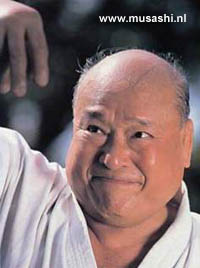 Na 18 maanden barre training keerde Mas Oyama terug in de maatschappij, niet alleen fysiek, maar zeker ook geestelijk, mentaal een andere, veel sterkere man, dan de man die na de oorlog terugkwam in een ondermijnd Japan. In de jaren '50 begon Mas Oyama zijn kracht en kunnen te demonstreren door het bevechten van stieren. In totaal bevocht hij er 52, waarvan hij er 3 onmiddellijk doodde en van de 49 anderen sloeg hij de hoorns af met een enkele Shuto (meshand) slag. Wat niet wil zeggen dat het allemaal zo gemakkelijk ging voor hem. Oyama verzweeg zeker niet dat zijn eerst poging enkel resulteerde in een kwade stier. In 1957, op 34-jarige leeftijd, werd zo een gevecht hem bijna fataal toen een stier hem in de rug nam en die openscheurde. Door dit gevecht werd hij zwaar gewond en het kostte hem 6 maanden om weer te herstellen van deze bijna fatale wond. In April 1952 reisde Mas Oyama naar de Verenigde Staten voor de eerste keer waar hij een jaar verbleef, zijn Karate demonstrerend live op nationale televisie. Daar vocht Mas Oyama tegen professionele boksers, worstelaars en iedereen die het waagde om hem uit te dagen, in totaal 270 tegenstanders. Hij versloeg hen allemaal, de meesten met een enkele aanval! Geen enkel gevecht duurde langer dan 3 minuten en de meeste waren al over na enkele seconden. Mas Oyama's vechttechniek was gebaseerd op het principe van de Samurai krijgers, "Ichi geki, hissatsu", of "één stoot, zekere dood". Als hij tot bij je kwam was het gevecht over. Als hij je sloeg, brak je â als jij zijn slag blokte was je arm gebroken of ontwricht, indien je niet blokte was je rib gebroken.
Na 18 maanden barre training keerde Mas Oyama terug in de maatschappij, niet alleen fysiek, maar zeker ook geestelijk, mentaal een andere, veel sterkere man, dan de man die na de oorlog terugkwam in een ondermijnd Japan. In de jaren '50 begon Mas Oyama zijn kracht en kunnen te demonstreren door het bevechten van stieren. In totaal bevocht hij er 52, waarvan hij er 3 onmiddellijk doodde en van de 49 anderen sloeg hij de hoorns af met een enkele Shuto (meshand) slag. Wat niet wil zeggen dat het allemaal zo gemakkelijk ging voor hem. Oyama verzweeg zeker niet dat zijn eerst poging enkel resulteerde in een kwade stier. In 1957, op 34-jarige leeftijd, werd zo een gevecht hem bijna fataal toen een stier hem in de rug nam en die openscheurde. Door dit gevecht werd hij zwaar gewond en het kostte hem 6 maanden om weer te herstellen van deze bijna fatale wond. In April 1952 reisde Mas Oyama naar de Verenigde Staten voor de eerste keer waar hij een jaar verbleef, zijn Karate demonstrerend live op nationale televisie. Daar vocht Mas Oyama tegen professionele boksers, worstelaars en iedereen die het waagde om hem uit te dagen, in totaal 270 tegenstanders. Hij versloeg hen allemaal, de meesten met een enkele aanval! Geen enkel gevecht duurde langer dan 3 minuten en de meeste waren al over na enkele seconden. Mas Oyama's vechttechniek was gebaseerd op het principe van de Samurai krijgers, "Ichi geki, hissatsu", of "één stoot, zekere dood". Als hij tot bij je kwam was het gevecht over. Als hij je sloeg, brak je â als jij zijn slag blokte was je arm gebroken of ontwricht, indien je niet blokte was je rib gebroken.
 Door zijn kracht en kunnen werd hij bekend als "the Godhand". Voor hem was dit het echte doel van de techniek van Karate. De mooie schoppen en ingewikkelde technieken kwamen op zijn inziens op de 2e plaats terwijl hij toch bekend was voor de kracht van zijn trappen naar het hoofd. In die tijd ontstond ook de 100-Men Kumite. Om zijn eigen mogelijkheden verder te testen, besliste Mas Oyama om een driehonderd man kumite te doen in 3 dagen. He koos de sterkste studenten uit zijn dojo om hem te bevechten, één voor één. Nadat iedereen aan beurt was geweest, startten ze terug van het begin totdat alle driehonderd gevechten voorbij waren.
Door zijn kracht en kunnen werd hij bekend als "the Godhand". Voor hem was dit het echte doel van de techniek van Karate. De mooie schoppen en ingewikkelde technieken kwamen op zijn inziens op de 2e plaats terwijl hij toch bekend was voor de kracht van zijn trappen naar het hoofd. In die tijd ontstond ook de 100-Men Kumite. Om zijn eigen mogelijkheden verder te testen, besliste Mas Oyama om een driehonderd man kumite te doen in 3 dagen. He koos de sterkste studenten uit zijn dojo om hem te bevechten, één voor één. Nadat iedereen aan beurt was geweest, startten ze terug van het begin totdat alle driehonderd gevechten voorbij waren.
Elke student van Mas Oyama moest het ongeveer 4 keer tegen hem opnemen in die 3 dagen, terwijl sommigen niet eens door de eerste dag heelhuids heen kwamen, vooral te wijten aan de krachtige uithalen van Mas Oyama. De legende gaat dat Mas Oyama nog voor een vierde dag wou gaan maar dat geen enkele tegenstander nog tegen hem wilde vechten, of er niet meer toe in staat was. In 1954 opende Mas Oyama zijn eerste dojo op een perceel gras in Tokyo. Maar juni 1956 wordt toch gezien als de echte start van de Oyama karate school omdat hij toen zijn dojo achter de Rikkyo Universiteit opende, 500 meters van het huidige Honbu. In 1957 trainde er 700 leden ondanks het grote aantal uitvallers door de zeer zware trainingen. Beoefenaars van andere stijlen kwamen ook in de dojo trainen voor de jis-sen kumite (full contact vechten). Mas Oyama observeerde die andere stijlen dan en zou de bruikbare technieken voor een gevecht inpassen. Door dit te doen evolueerde Mas Oyama's Karate in een van de meest indrukwekkende stijlen in de wereld van gevechtskunsten.
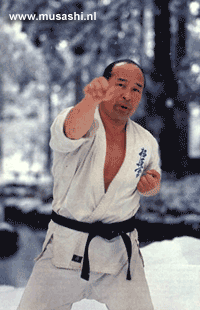 De stijl werd al snel bekend als "The Strongest Karate", niet alleen door de ongelooflijke kracht- en uithoudingsprestaties die Mas Oyama opbracht, maar ook door de strenge vereisten voor training en wedstrijden. De Oyama Dojo leden namen hun kumite serieus, het primair als een vechtsport beschouwend, dus ze verwachtten om te slagen en geslagen te worden. Met weinig restricties, aanvallen naar het hoofd waren normaal, meestal with de palm van de hiel of met de vuisten, in handdoeken gewonden. Vastnemen, worpen en aanvallen naar het kruis kwamen ook veel voor. Kumite rondes duurden zolang totdat iemand luidkeels opgaf. Blessures gebeurden op dagelijkse basis en het opgeefpercentage was enorm hoog (meer dan 90%). Ze hadden geen officiële do-gi en droegen wat ze hadden. In juni 1964 werd het huidige Honbu (het wereld hoofdkwartier) officieel geopend en de naam "Kyokushin", of "Ultieme Waarheid" werd aangenomen voor Mas Oyama's Karate organisatie, de "International Karate Organization" (IKO). Van toen af aan spreidde het Kyokushin Karate zich uit over meer dan 120 landen met meer dan 15 miljoen beoefenaars, wat inhield dat het Kyokushin een van de grootste gevechtsstijlen ter wereld is geworden. In 1974 werd Mas Oyama geëerd voor zijn werk met de 9e Dan en kort daarna zelfs met de 10e Dan, de hoogst haalbare graad in de wereld, door het internationaal comité van landenvertegenwoordigers.
De stijl werd al snel bekend als "The Strongest Karate", niet alleen door de ongelooflijke kracht- en uithoudingsprestaties die Mas Oyama opbracht, maar ook door de strenge vereisten voor training en wedstrijden. De Oyama Dojo leden namen hun kumite serieus, het primair als een vechtsport beschouwend, dus ze verwachtten om te slagen en geslagen te worden. Met weinig restricties, aanvallen naar het hoofd waren normaal, meestal with de palm van de hiel of met de vuisten, in handdoeken gewonden. Vastnemen, worpen en aanvallen naar het kruis kwamen ook veel voor. Kumite rondes duurden zolang totdat iemand luidkeels opgaf. Blessures gebeurden op dagelijkse basis en het opgeefpercentage was enorm hoog (meer dan 90%). Ze hadden geen officiële do-gi en droegen wat ze hadden. In juni 1964 werd het huidige Honbu (het wereld hoofdkwartier) officieel geopend en de naam "Kyokushin", of "Ultieme Waarheid" werd aangenomen voor Mas Oyama's Karate organisatie, de "International Karate Organization" (IKO). Van toen af aan spreidde het Kyokushin Karate zich uit over meer dan 120 landen met meer dan 15 miljoen beoefenaars, wat inhield dat het Kyokushin een van de grootste gevechtsstijlen ter wereld is geworden. In 1974 werd Mas Oyama geëerd voor zijn werk met de 9e Dan en kort daarna zelfs met de 10e Dan, de hoogst haalbare graad in de wereld, door het internationaal comité van landenvertegenwoordigers.
In april 1994 stierf Mas Oyama op een leeftijd van 70 jaar aan longkanker. Mas Oyama's onverwacht overlijden liet zijn organisatie in een zeer verwarde staat achter. Voor zijn dood, verklaarde hij in zijn testament dat Yukio Nishida zijn opvolger zou zijn om de IKO te leiden, maar op zijn sterfbed benoemde hij spontaan Akiyoshi Matsui, toen Yondan (4de Dan).
Terwijl Matsui wel bedreven was, in Kyokushin Karate en in het managen van de organisatie, namen veel van de hogere yudansha (zwarte banden) en Branch Chiefs uit de organisatie aanstoot aan dit feit. Dit resulteerde in een versplintering van de IKO in 4 groepen. â de IKO 1 onder shihan Akiyoshi Matsui, de IKO 2 onder shihan Kenji Midori, de IKO 3 onder shihan Yoshikazu Matsushima en de IKO 4 onder shihan Toru Tezuka. Elke Japanse groep zegt de echt opvolger te zijn voor Mas Oyamaâs organisatie en sindsdien is de Kyokushin wereld verwikkeld in een zware machtsstrijd om het leiderschap. Buiten Japan is er nog een 5e en 6e groep Kyokushin karateka die zich aansloot bij de IKF onder Hanshi Steve Arneil uit Groot-Brittannië en bij de IBK onder Kancho Jon Bluming uit Nederland. Deze beide niet Japanse organisaties geven nog steeds les in het traditioneel Kyokushin Karate zoals het oorspronkelijk werd gedaan door Mas Oyama. Mas Oyama ontwikkelde niet alleen een geweldige effectieve gevechtsstijl maar gaf ons ook de Kyokushin levensfilosofie mee. Hij was mijn inziens één van de allerbeste karateleraren in de geschiedenis en hij leidde vele goede instructeurs op die mee hielpen aan het groot maken van zijn kyokushin organisatie. Hij liet ons iets na waar we met zijn allen duidelijk trots op kunnen zijn.
Hier is zijn Kyokushin Ideaal:
Keep your head low (modesty), eyes high (ambition), mouth shut (serenity), base yourself on filial piety and benefit others.
Met respect voor onze enige en échte leider
Osu !!
Sjaak van de Velde.

In loving memory of the best Kyokushin fighter ever
sensei Andy Hug
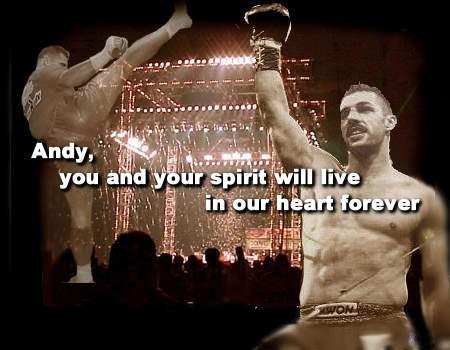
Andy Hug 7-9-1964 / 24-82000
the real Champion of the 4th World Championship Kyokushin
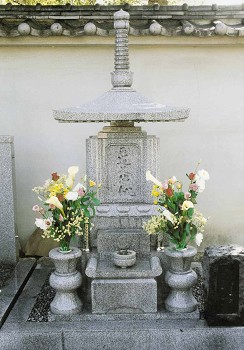
There are precious few heroes in this world, and we were privileged to come to know
a very special one in our beloved Andy. He was only a few weeks short
of his 36th birthday, when he suddenly died.
Shihan Andy Hug will be sorely missed by many, not only in the martial arts community.
Thank you Andy Hug shihan.
You were the best and you will always stay the best kyokushin fighter ever !!
Osu !!
Sjaak van de Velde
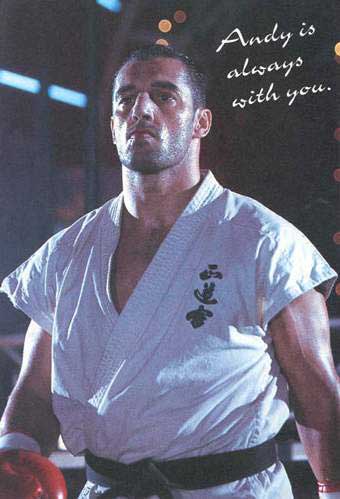
Andy's favorite number was "We will rock you" and it was played every time he walks up to the ring.
NICKNAME: Blue Eyed Samurai, Iron Man
ORGANIZATION: Internationa Kyokushin Kai Kan , Seido Kaikan
COUNTRY: Switzerland
DATE OF BIRTH: September 7th, 1964
DATE OF DEATH: August 24th, 2000
HEIGHT: 5 feet 11 Inches (180cm)
WEIGHT: 216lbs (98kg)
RANK: 5-DAN
FAVORITE TECHNIQUE: Kakato Otoshi
HOMEPAGE: Http://www.andyhug.com
Kyokushin record:
1983 1st place heavy weight 1ste Ibusu Cup
1985 1st place heavy weight European Championship
1985 1st place heavy weight 2nd Ibusu Cup
1987 3rd place heavy weight European Championship
1987 2nd place 4th World Championship defeat by dicision to Shokei Matsui
1989 1st place heavy weight 4ste Ibusu Cup
1991 1st place heavy weight European Championship
1991 5th World Championship defeat by ippon to Francisco Filho
Andy Hug was the real Champion of the 4th World Championship Kyokushin
1st round : win by ippon Stefan Gopel
2nd round: win by decision Masashi Komoto
3rd round : win by ippon Yasuhiro Kuwashima
4th round : win by ipppon Ademir Da Costa
5th round : win by decision Akira Masuda
Final : Andi Hug vs Shokei Matsui
Titles:
Karate World Cup Champion 1992
Karate World Cup Finalist 1993
U.K.F. World Super Heavyweight Champion
W.M.T.C World Super Heavyweight Champion
W.K.A. World & European Muay Thai Super Heavyweight Champion
K-1 World Grand Prix 1996 Champion
K-1 World Grand Prix 1997 Finalist
K-1 World Grand Prix 1998 Finalist
Samurai
K-1 Record: 38 Wins - 9 Losses - 1 Draw - 0 No Contests
07-07-2000 Nobu Hayashi W 1R 2:05 KO (Punch) K-1 K-1 Spirits 2000
03-06-2000 Mirko Cro Cop W 5R Decision 3-0 K-1 K-1 Fight Night 2000
23-04-2000 Glaube Feitosa W 3R Decision 3-0 K-1 K-1 The Millennium
19-03-2000 Musashi W 5R Decision 2-0 K-1 K-1 Burning 2000
05-12-1999 Ernesto Hoost L 3R Decision 0-3 K-1 K-1 WORLD GP 1999 FINAL
05-10-1999 Hiromi Amada W 1R 1:51 TKO (3 Knockdowns) K-1 K-1 World Grand Prix 1999 (Final Elimination)
22-08-1999 Maurice Smith W 5R Decision 3-0 K-1 K-1 Spirits 1999
06-06-1999 Stefan Leko W 5R Decision 3-0 K-1 K-1 Fight Night 5
25-04-1999 Ray Sefo W 4R 3:00 TKO (Corner Stoppage) K-1 K-1 Revenge 1999
03-02-1999 Tsuyoshi Nakasako W 2R 0:22 KO (Right Rear Turning Kick) K-1 K-1 Rising Sun 1999
13-12-1998 Peter Aerts L 1R 1:10 KO (Kick) K-1 K-1 WORLD GP 1998 FINAL
13-12-1998 Sam Greco W 3R Decision 2-0 K-1 K-1 WORLD GP 1998 FINAL
13-12-1998 Ray Sefo W 2R 2:28 TKO K-1 K-1 WORLD GP 1998 FINAL
28-10-1998 Miyamoto Masaaki W 1R 2:50 KO (Punch) K-1 K-1 Japan '98 Kamikaze
27-09-1998 Mark Russell W 2R 3:07 KO (Left Low Kick) K-1 K-1 World GP 1998 Opening
07-08-1998 Mike Labree W 1R 2:11 KO (Kick) K-1 K-1 World GP 1998 in Las Vegas
06-06-1998 Peter Aerts W 5R Decision 3-0 K-1 K-1 Fight Night 4
09-04-1998 Curtis Shuster W 5R Decision 3-0 K-1 K-1 Kings 1998
09-11-1997 Ernesto Hoost L 3R Decision 0-2 K-1 K-1 WORLD GRAND PRIX 1997 FINAL
09-11-1997 Peter Aerts W 3R Decision 0-3 K-1 K-1 WORLD GRAND PRIX 1997 FINAL
09-11-1997 Masaaki Satake W 1R 0:15 KO (Left High Kick) K-1 K-1 WORLD GRAND PRIX 1997 FINAL
07-09-1997 Pierre Guenette W 1R 1:49 TKO (Right Hook) K-1 K-1 World GP 1997 Opening
20-07-1997 Francisco Filho L 1R 2:37 KO (Punch) K-1 K-1 Dreams 1997
07-06-1997 Mike Bernardo W 5R Decision K-1 K-1 Fight Night 1997
29-04-1997 Sam Greco D 5R Decision Draw K-1 K-1 Braves 1997
16-03-1997 Peter Aerts L 1R 1:55 TKO (Punch) K-1 K-1 Kings 1997
08-12-1996 Musashi W 5R Decision 3-0 K-1 K-1 Hercules 1996
18-10-1996 Masaaki Satake W 5R Decision 3-0 K-1 K-1 Star Wars 1996
01-09-1996 Stan 'The Man' W 2R 2:00 KO (Punch) K-1 K-1 Revenge 1996
02-06-1996 Sadau Keatsongrit W 2R 3:02 TKO K-1 K-1 Fight Night 2
06-05-1996 Mike Bernardo W 2R 1:18 KO (Kick) K-1 K-1 WORLD GP 1996 FINAL
06-05-1996 Ernesto Hoost W Ext.R Decision 1-2 K-1 K-1 WORLD GP 1996 FINAL
06-05-1996 Duane Van Der Merwe W 1R 0:40 KO (Punch) K-1 K-1 WORLD GP 1996 FINAL
10-03-1996 Bart Vale W 1R 2:24 TKO K-1 K-1 World GP 1996 Opening
09-12-1995 Jerome Le Banner W 5R Decision 3-0 K-1 K-1 Hercules 1995
03-09-1995 Mike Bernardo L 2R 2:43 KO (Punch) K-1 K-1 Revenge 2
16-07-1995 Ernesto Hoost L 3R Decision 2-0 K-1 K-3 Grand Prix 1995 (a.k.a. K-1 Legend 1995)
10-06-1995 Dennis Lane W 2R 3:00 TKO (Corner Stoppage) K-1 K-1 Fight Night 1995
04-05-1995 Peter Kramer W 1R 0:45 KO (Punch) K-1 K-1 WORLD GP 1995 FINAL
03-03-1995 Mike Bernardo L 3R 2:39 TKO K-1 K-1 World GP 1995 Opening
10-12-1994 Rob Van Esdonk W 4R 0:55 KO (Left Punch) K-1 K-1 Legend 1994
02-10-1994 Jeff Roufus W K-1 K-1 Karate World Cup
18-09-1994 Patrick Smith W 1R 0:56 KO (Left Knee) K-1 K-1 Revenge 1994
30-04-1994 Patrick Smith L 1R 0:19 TKO (Right Uppercut, 2 Knockdowns) K-1 K-1 WORLD GP 1994 FINAL
04-03-1994 Branco Cikatic W 5R Decision 3-0 K-1 K-1 Challenge 1994
19-12-1993 Eric Albert W 2R 2:08 KO (Punches, Left Punch) K-1 K-2 World Grand Prix 1993
05-11-1993 Ryuji Murakami W 1R 2:10 TKO K-1 K-1 Andy's Glove
03-04-1993 Nobuaki Kakuda W 2R 1:26 KO (Knee)K-1 K-1 WORLD GP 1993 FINAL
Click on the banner for visiting the Andy Hug Foundation
Andy Hug was born on 7th September 1964 in the small village of Wohlen in Switzerland. Because his mother was unable to care for him, Andy was immediately given up for adoption. Andy Hug spent the first years of his life in an orphanage, until his grandmother took over his care at the age of three years old. It has been said that Andy's home situation brought on mocking and bullying from his classmates. When a friend of Andy introduced to him the local Karate dojo (he was only 10 years old at the time)
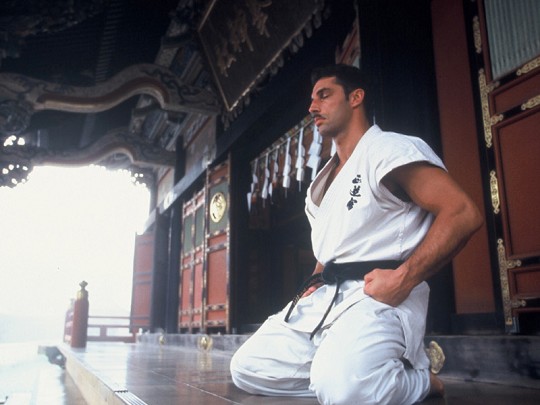
Andy began taking karate lessons so he could fight back. Andy quickly became so good that the Swiss Karate Federation bent the rules to allow the teenaged sensation to compete with adults for the All Switzerland Karate Championship. Andy won the tournament easily! Andy was only 19 years old when fought in Japan for the first time, at the Kyokushin 3rd World Open Tournament in 1983.
Andy was newcomer and a young talent, and he impressed the whole world with his unique fighting skills and technique. Four years later, at the 4th Kyokushin World Open in 1987, Andy made it to the finale by easily defeating big fighters like Masuda from Japan and Ademir da Costa from Brazil - both of whom have passed the ultimate test in Kyokushin, the 100 men kumite. The 4th World Open finale was a fight against the two best technical fighters ever in the history of Kyokushin: Matsui and Andy.
It was the first time ever that a non-Japanese fighter was in a World Open finale, and today Kyokushin karate-ka and fight lovers around the world still talk about the big finale, and about the outcome and the result. But no matter the result, Andy opened a new area for European and western fighters, and showed the world that by hard training and true skills, anybody can become a champion. To a lot of people, Andy was the true winner of the finale, and should have been the champion of the 4th World Open Tournament.
One year later, on 17th September 1988, a special Kyokushin karate event was held in Sursee in Switzerland. It was the 1st International Super-Cup, which had been organized by the Swiss Karate Association. Kyokushin competitors from Japan, Great Britain, Netherlands, Hungary, Germany and Spain fought in the tournament. Before the vice-world champion, Andy Hug was to fight against Kenji Midori from Japan in the finale (Kenji Midori became the 5th Kyokushin World Open Champion in 1991); Andy defeated Siegfried Elson from the Netherlands in the semi-finale. The most exciting fight of the evening was undeniably the finale between Andy Hug and Kenji Midori. After two extension rounds, Andy Hug was declared as the winner of the fight and the Tournament.

In 1989, Andy Hug became Kyokushin European Champion in the Heavyweight Division for the second time. Andy was a superior European champion, and he was so popular that he traveled around the countries of Europe as a special guest instructor at Kyokushin summer camps to teach the art of knock down karate. Before Andy Hug left Kyokushin karate in 1992, to fight for Seidokaikan Karate and in the K-1, he fought against the best fighters and the biggest names in the history of Kyokushin, and only losing very few fights. Even though it has been more than 8 years since Andy Hug has left the Kyokushin karate organization, Andy is still remembered and respected as a superstar and idol for many Kyokushin members - as the true champion that he was in more than a decade in Japan and around the world.
The same year Andy Hug left the Kyokushin organization, he became World Open Champion in Seido karate, by winning the finale against Taiei Kin on 5-0 judge decision. One year later, in 1993, Andy was again in the finale in the Seido World Cup, by wining on TKO against the famous fighter Nobukai Kakuda in the opening rounds. The finale was a fight against the Japanese champion Masaaki Satake. It was a finale where Andy Hug controlled the fight from start to finish! Andy even hit Satake in the face with his famous axe kick so hard that Satake went down. But fighting against the national hero and champion, Andy was fighting against uneven odds, and he lost the fight and the finale on tameshiwari after three extension rounds. But he won the heart of the Japanese people, and got the nickname: The samurai with blue eyes.
It was also in 1993 that Andy Hug started his K-1 career. On 5th November 1993, Andy got his debut in the K-1 against Ryuji Murakami, a fight that Andy won by TKO in the first round, after he knocked out Ryuji three times in only 50 seconds. Andy Hug became a superstar from Hokkaido to Okinawa. But it was not only his famous axe-kick, super strength and his sublime technique that made him the people choice, it was his spirit and warmth that earned him the deep respect of his opponents and the deep love of his fans.
In Japan Andy Hug received the title of "Samurai" which is a distinction of great honor. Kancho Ishii, the promoter of the K-1 in Japan tells: "The reason why the people in Japan like Andy so much is because he owns something that the Japanese respects: a big heart, generosity, strength and a will of iron." Because of Andy's fitness and charisma, he got enormous popularity in Japan where he had lived in recent years. But even though Andy became rich and famous, he remained modest, polite and truthful.
Andy Hug always had time for his fans and he never refused an autograph request, and it was precisely this which his primarily young fan club loved. He was a true hero. Since Andy Hug was as a young boy, he was inspired from the "Rocky" movie to train passionately in his quest to become a World Champion. Andy became a champion - many times. Andy did take on the world, working through Kyokushin and Seidokaikan karate. In 1996, Andy Hug's determination netted him the title of the best martial arts fighter in the world.
But before he became K-1 champion in 1996, and K-1 finalist in 1997 and 1998, Andy also won the UKF World Super Heavyweight Champion, WMTC World Super Heavyweight Champion, WKA World & European Muay Thai Super & Heavyweight Champion. Andy spent his last years in Japan, but even though he no longer was living in Switzerland, Andy was the most popular sportsman in Switzerland, and he loved his home country very much. So once a year, Andy Hug was fighting in the K-1 Fight Night Tournaments in Zürich, in the period from 1995-2000. Andy never lost one single fight in Zürich, even though he was fighting the best from the game and the biggest names, like the double K-1 champion Peter Aerts, the famous Mike Bernardo from South Africa, Mikro Filipovic and Stefan Leko. Andy Hug got the name "Ironman" from his opponent in the K-1 because he was always fighting and attacking round after round, and because he refused to give up or slow down when he was fighting.

From 31st July and in the beginning of August 2000, Andy was home in Switzerland to visit his wife Ilona Hug, with whom he just had been divorced from last month, and his loved son, Seya Hug. Andy did not feel 100% fit, and therefore he went to a hospital in Switzerland for tests & medical examination. Andy had been complaining to doctors about attacks of hot fevers, but there was no sign of illness, even though Andy had over 39 incidents in which he was suffering hot fever attacks, and heavy nosebleeding.
Andy decided to return to Japan, despite his illness and the advice of the doctors in Switzerland, on August 14. Even on the way to the airport, Andy has serious nosebleeding, but Andy was determined to return to Japan, to participate at the K-1 Grand Prix 2000 Tournament in Fukuoka. Andy's manager Rene Ernst was also trying to persuade him not to travel but he had no luck in the attempt. Andy never returned to Switzerland again.
Andy has just returned to Japan, when he three days later, he collapsed, and was taken to the Nippon Medical School Hospital for further tests and medical examination. Andy's personal physician found a swelling tumor on the left side of his neck, and that was when doctors realized he was suffering from Leukemia. Treatment began immediately, including chemotherapy. Andy knew that he was seriously ill, and so he contacted his wife Ilona by phone, to tell her the scarring news about his health and his condition.
Andy told Ilona that he will not return to Switzerland, but that he would stay in Japan. Andy said: Japan is my home, and here I will stay and fight the illness. The doctors gave Andy a big warning message, and told him that since he was suffering from heart and/or circulation problems, the chemotherapy had a very high chance of backfiring and destroying his body for good. Andy had tears in his eyes when the doctors gave him the diagnosis, but still he was so committed to the sport and his fans, that he asked for an interview, so he could tell about his disease to the people. But in the judgement of the group of doctors, the interview was not allowed.
On 21st August at 9 a.m. Kancho Ishii visited Andy Hug at the Nippon Medical School Hospital. According to Kancho Ishii, they talked about the K-1 tournament in Yokohama on the 20th of August, where Andy's friend Francisco Filho won. Andy also told Ishii that if he should die soon, he would like to die in Japan. On 22nd August Andy was in a "fine" state, he was watching television and talking on the cell phone and was eating without help. Andy calls Ilona Hug by the phone, and tells her that, if the worst situation should happen, he would like spending his last time in Japan.
Andy also took the time to write this letter to his fans:
"Dear Fans
I think that you will be shocked when you will hear in what state of health I am. When the doctor told me about it, it was an enormous shock even for myself. But I want to inform you about my state of health so that I can fight together with you against this illness. This illness is the most severe opponent of all my fights. But I will win. As if I would stand in the ring I will get power from your cheers and beat this strong opponent. Unfortunately I will not be able to fight at the tournament in October. I will fight against this illness in Japan and one day I will appear again with you. Let's keep it up!
Greetings Andy Hug"
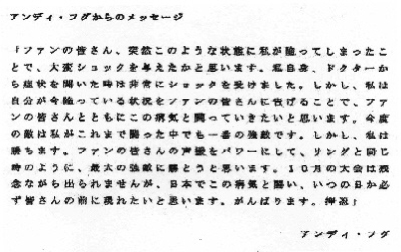
Strangely, this letter became the last message to his fans before he died. Kancho Ishii has also said, that the last word Andy Hug spoke to him was before he went into coma was: "I love you"… And Ishii replied with the words: I know Andy-san. In the morning of 23rd August, Andy has difficulty breathing. Later in the afternoon Andy cannot breathe by himself and his condition worsened, and Andy gets attached to a respirator. Andy had purple spots on his body, along with digestion pipe bleeding, eyeball bleeding, urinary track bleeding and bleeding genitals. Andy's condition is now so critical, that Ilona Hug has been told to take the first airplane from Switzerland to Japan.
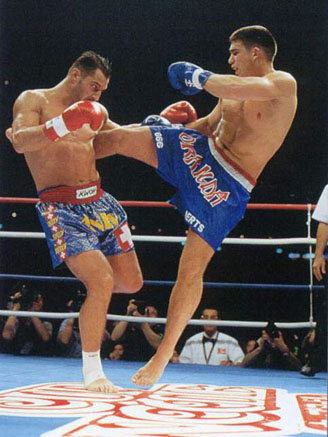
Thursday on 24th August, at 18:21 - Andy Hug dies at the age of only 35 years old. According to Japanese TV, Andy's heart stopped three times, but somehow the doctors managed to get his pulse back again. But the fourth time Andy's heart stopped, the doctors no longer tried to bring Andy back to life, and let Andy sleep peacefully into the death - and the fight ended when the doctors stopped. The famous Dutch K-1 fighter, Peter Aerts was also at the Nippon Medical School Hospital, where he was doing treatment of the lower back.
Peter Aerts collapsed and was crying for more than two hours, when he was told that Andy passed away. Peter Aerts was interviewed on live national TV only one hour after Andy was declared dead, and here he promised the world, that he will fight for Andy, who was a personal good friend to Peter, in the upcoming K-1 Grand Prix on 10th December 2000. At the same time, the news of Andy's death was reported by all news shows and broadcast live on TV on NHK news 10, Sports MAX, Fuji TV, News Japan & TV Asahi. The death of Andy was also telegraphed to all over the world by the AP communication.
Thursday, 24th August, at 20:45 a group of five doctors, who gave treatment to Andy and Kancho Ishii, attend and a press conference, which took about one hour at the Nippon Hospital. At around 21:45 Francisco Filho comes to the condolence hall. About 40 minutes later, Filho left the Hospital speechless without any words to the reporters, with wet red eyes. On 26th August, it gets decided that the K-1 World Grand Prix 2000 Tournament in the Tokyo Dome on10th December 2000, becomes an Andy mourning performance. Also the part with the profit of the mourning performance is to be presented to Seya, Andy's five-year-old son.
The funeral service and the last farewell took place at the Yoshifuku Temple on 27th August in Tokyo. More than 12,500 people were lined up to pay Mr. K-1, Andy Hug the last respect and condolence. A floral tribute from the many fans began with the special altar outdoors, and the procession of the fans reached more than 2 kilometers. Andy's wife, Ilona Hug made a speech for Andy and for the 800 special invited guests at the ceremony, with veil she was holding in her arms was a frame with a picture of Andy Hug smiling. Some of the many invited guests at the ceremony was: Family and friends of Andy, The President of Switzerland, K-1 Master Ishii, Kancho Matsui, Kenji Midori, Hajime Kazumi, Masuda, Nicholas Pettas, Francisco Filho and even the big sumo wrestling grand champion in Japan.
People were heartbroken, and when Francisco Filho, Nicholas Pettas, Nobukai Kakuda, Sasaki and other chosen martial arts fighters where carrying Andy's coffin, the official ring announcer of the K-1 was calling Andy by tears: "In the red corner, 180 cm, 97.7 kg, the former K-1 Grand Prix champion; Ann Deeee Hu-uug" over the loudspeakers as the champion took his final exit. At the same time, they listened to the music of "We will rock you" by Queen, the song that had for years trumpeted Andy's arrival into the ring.
Andy Hug was preparing for the K-1 Grand Prix finals in December 2000, and planned on having a retirement match in Japan in the near future, after the Grand Prix. Andy was hoping to start a film career after retiring from fighting, but his last dream never came true. There are precious few heroes in this world, and we were privileged to come to know a very special one in our beloved Andy. He was only a few weeks short of his 36th birthday, when he suddenly died.
Shihan Andy Hug will be sorely missed by many, not only in the martial arts community. My deepest condolence is offered to Andy Hug's family and friends. Osu!
Andy Hug a born fighter
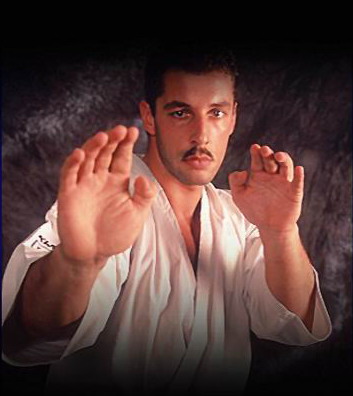
I still remember August the 24th year 2000 as it was yesterday, when I received a mail from Tomoko Kurosawa, wife to the former Kyokushin fighter and champion, Hiroki Kurosawa â€" where she told me the sad and terrible news, about Andy has passed away. In the time and days after August the 24th year 2000, I was writing an article about Andy Hug, who so sadly has passed away, in a far too young age - and on a very tragic way, after a short period of time of illness to leukemia, at the Nippon Medical Hospital in Japan.
I made the article for serial reasons. First of all to honor and pay my respect to an amazing human, who I personally admired so much, and still do, for whom he was - and for what he accomplish in his short lifetime. I also made the article to pay my condolence to Ilona and Seya Hug, who so sorely lost a husband and a father. I was hoping that Ilona, Seya and near family members and friends to Andy in times of need - might find a little relief reading, about the enormous impact there beloved had on thousands of people around the world.
Tree years after the death of Andy, in late august 2003, I had the privilege to talk to Ilona Hug, who is as kind, friendly, humble and warm as Andy Hug was. Ilona Hug gave me a copy of her book; “Andy Hug. Der Taifun und die Weisheit der Kampfkunst, written by Ilona Hug and Erik Golowin. The book and my conversations with Ilona Hug, gave me the inspiration to write this new article about Andy. There are two articles that keep coming to my mind, when I am trying to find a red tread and an entrance angle to start this article. First and foremost, it is an article called; a Life goes on. It is a warm and open hearted interview with Ilona Hug, who describes how life goes on, tree year after Andy died under mysterious ways in Japan, and how she and her son Seya Hug, response to the death of a father and husband.
The other article that also has inspired me, is a short article about Andy Hug, that I found on the Bout Review homepage, made by the editorial director and co publisher Fernando Avila, called: “Lager Than Life†. The article made by Fernando Avila, is an chronologically story about Andy's fighting career, starting in 1987 where Andy Hug is fighting Matsui, at the 4th World Open Tournament finale in Kyokushin karate, and up threw his K-1 career. I will like Fernando Avila, also write about some of Andy Hug's most spectacular and importants fights, starting in 1987 at the 4th World Open, and up threw his career in Kyokushin, Seidokaikan and in the K-1.
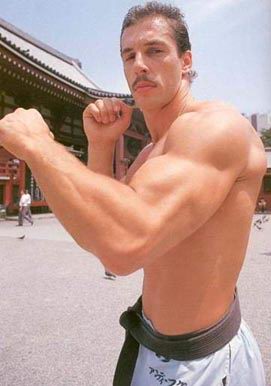
And then I also will try to describe, about the impact Andy had on his sport and on the martial arts community, being a pioneer and inspiration for many people around the world, as a fighter and human. Fernando Avila hits and interested spot, when he in his article is mentioning and describing Andy and the first K-1 fight between Andy Hug Vs Patrick Smith, at the K-1 1994 Grand Prix. A fight that in my book should have been a no contest fight or a disqualification of Patrick Smith, for hitting Andy after the judge has said stop.
Patrick Smith has just sent Andy down, by a clean right hook to the chin, when he illegal hits Andy once again. Andy is in the process of getting up from the floor, by a very fast knock down, only 10 seconds into the fight in the first round. Andy is hit, but do not seem to be shaken at all, and is up back on his feet less than split second after he has been sent down. On his way up from the floor, Andy is once again hit by Patrick, even do the judge has said stop, and is about making a new count on Andy. The judge is pushing himself into the middle of the two fighters, waving his arms in the air, signaling to the two fighters to stop fighting, when Patrick is smashing Andy with another powerful hook to the head - and Andy naturally goes down once again.
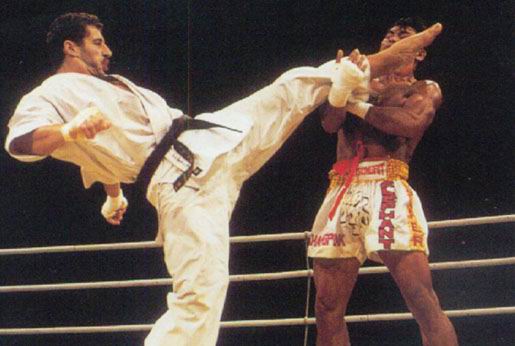
Instead of disqualifying Patrick, the judge stops the fight, giving the victory to Patrick Smith? And episode similarly to the one that happened between Nicholas Pettas Vs Jerome le Banner, and Botha Vs Abidi. (Andy Hug Vs Patrick Smith K-1 1994) The interested part in this fight and in this episode was, Andy's calm way that he handle the saturation, in the minutes after the fight standing in the ring, and in the time up to the rematch and in his rematch against Patrick Smith later same year at the 1994 K-1 Revenge. Even do the fans and the ordinance in the Dome, at the K-1 1994 Grand Prix where throwing garbage in the ring, screaming and jelling in anger and frustration over the ridicules and absurd judgment, and even do Andy's own corner was complaining to the officials, Andy never complained public about the incident himself. Not under or after the fight to the K-1 organization, even do the fight and way of loosing it, burred Andy threw out his entire career.
Andy had this outstanding fighting philosophy, heart and outlook on life, that if some one defeated him, he would train even harder to become stronger and better, instead of complaining and giving embracing excuses for why he lost. A philosophy that made him respect by all his opponents in Kyokushin, Seido and in the K-1. Big fighters like Peter Aerts and Mike Bernado have often mention Andy's enormous heart, by calling the philosophy for the The Andy Spirit. Andy did became stronger after his absurd defeat at the K-1 1994 Grand Prix, and in his rematch at the K-1 1994 Revenge against Patrick Smith, Andy was in focus and in control, making justice by knocking out Patrick in the first minute in the first round, by a kick to the lever and a knee strike to the head. Fernando Avila really mention on of the most remarkable trademarks of Andy, his dedication to his sport, his heart and spirit - and his enormous will to push his own limits, being the best he could be, in any aspects in his life as a human and fighter.
Threw out Andy's fighting career, there where a handful of fights, where the judges played and enormous role, and was a tragic part in the outcome of the results. The two most remarkable and discussed fights â€" was also the two most important fights for Andy in his entire career. The first fight was his fight against Matsui, at the Kyokushin 4th World Open in 1987, and against Francisco Filho at the 5th Kyokushin World Open in 1991. Andy's biggest dream, was to become Kyokushin karate World champion. It was a realistic dream and goal for Andy, because he was the absolute best fighter in the world, in the period from the middle 80's and up till the early 90's, where the 4th and 5th World Open in Kyokushin took place.
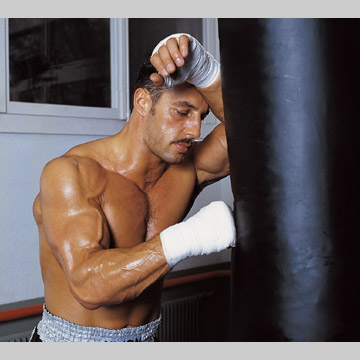
But it was also in this period, where Andy was to have his biggest disappointments as a fighter, and properly also his two most controversy, important and most painful looses in his fighting career. By many Kyokushin fighters and karate-ka around the globe, the 4th World Open in 1987, stands as the best and strongest World Open in the history of Kyokushin. The level of fighters taking part in the tournament, like Ademir da Costa, Kurosawa, Matsui, Peter Smith, Masuda, Michel Wedel, Yosihikazu Koi, Michael Thompsen, Shichinohe, Yoshitaka Nishiyama and Kenji Midori just to name a few, made the tournament second to none, and the hardest ever.
It was not only because of the extreme high quality of the fighters, taking part in the same tournament, that made is so special, it was also the first time in the history of Kyokushin, where a non-Japanese was fighting in the finale. 17 years after the fight between Andy Hug and Akiyoshi Matsui, the Kyokushin society is still divided in two groups, when it comes to who people think should have won the title. (Andy Hug Vs Matsui Kyokushin 4th World Open 1987)

Tristan Thiele, who was a Dutch fanatical Kyokushin student and a sparring/training partner, for the former great karate and kickboxing champion and top fighter Peter Smith, in the late 80's told me an a personal anecdote about Andy, from the 4th World Open Tournament in 1987.
Tristan Thiele was a member of the national Dutch team and had the opportunity to be in one of the two dressing rooms for the non-Japanese fighters (The gaijin dressing room). Tristan told me, that the dressing room was filled with a very diverse group of people. Some were warming-up for a fight, others were discussing techniques or opponents, and others were just wondering around. There was a hustle-and-bustle going on in there, and from time to time, the noise was unbearable high. Amidst all of this turmoil, there was one person with a very serene aura about him. Keeping one to himself, not talking to anyone-and-everyone, fully relaxed yet fully focused. The person was Andy Hug.
Tristan told me, that at one moment in the dressing room, he even saw Andy sleeping. That was when he realized what separates warriors from fighters. Rumors say, that Sosai Mas Oyama the founder of Kyokushin karate, demanded that Matsui should win the fight and world title, at any cost. A rumor that Oyama started himself, when he just before the World Open was to begin said on TV, that as a long as he life, the champion of the world in Kyokushin karate, always will be Japanese. (Andy Hug, Matsui and Mas Oyama 1987) Mas Oyama had Shihan Yuzo Goda judging the final fight, between Andy Vs Matsui. Yuzo Goda was Oyamas right hand, and Head Instructor at the Honbu Dojo, so it was easy for Oyama to fill out his plan having a Japanese to become champion.
It gave Goda and the four corner judges, no other choices than voting and giving the victory to Matsui. A classic and sad incident in the history of Kyokushin, as it also happened at the 2nd World Open in 1979 to Willie Williams from USA, when he suddenly became a dangerous contender to the title and suddenly got disqualified. The list is never ending, when it comes to rumors and embarrassing decisions in Kyokushin tournaments. In 1991, four years after his defeated to Matsui in the World Open finale, Andy was for the 3rd time in his career taking part in a Kyokushin World Open tournament, well knowing that this will be his absolute last chance to fulfill his dream, of becoming champion of the world. Andy was more prepared than ever, having trained and sparred with the Dutch champion Michel Wedel, up till the tournament starts. (Andy Hug first tree fights at the 5th World Open 1991)
Andy showed skills, strength and technique in a league of it's own in his opening fights, even do his draw for the tournament was extremely hard. Andy's tree first fights look like and impossible assignment, and like Mas Oyama was interested in having Andy eliminated early, by giving him the toughest start and opponents possible, simply because Andy was the biggest contender to the title. But Andy did made it threw the first day by extremely hard work and efforts. It was especially his famous ax kick, which had an effective effect on his opponents, who seemed confused and defenseless against it. Andy had to fight hard to get it to the 4th round, where he was to fight the young newcomer from Brazil, Francisco Filho.
This fight showed to be crucial for Andy, and it turned out to be the last one he ever fought, as a member of the Kyokushin organization. Filho had won all his first tree opening fights at the 5th World Open on KO, before he was facing Andy. Filho proved from the start of the tournament, that he had lots of potential, strengths and a brilliant technique. Filho was defiantly the biggest talent and upcoming star of the 5th World Open, and for the same reason, he also won the Fighting Spirit Award of the tournament.
It is worth mention in credit to Chico - that he won on KO against the Japanese fighter Shinichi Sotodate, by a perfect Ax kick to the head. The fight between Filho and Andy, started with and explosive energy from the first second, and with dynamics kicks from both fighters, who both where trying to win control and respect of the fight. The fight was more or less even at the end of the first round, with Andy as the fighter of the two, who where showing most routine and aggression. In the absolute last second of the fight, the judge screams Yame witch in Kyokushin terms means stop fighting, just like a break means in boxing. Andy hears and obeys the judge, and is about to put his arms down - showing that he will stop fighting. Sadly for Andy, Filho don't hear the judge, and is at the same time making a powerful roundhouse kick in the face of Andy, who falls down floppy and totally unconscious. It was a really ugly knock out. First and foremost because the kick and the impact was extreme powerful, but also because it hit Andy point blank, when he was't expecting the kick coming. Andy was carried away from the ring on a stretcher, and I have been told by Ilona Hug that Andy after his fight against Filho, was sitting paralyzed in the looker-room together with his team and his Wife Ilona, refusing to accept and understand the defeat.
Andy truly believed, that the Kyokushin organization will give him a 2nd chance to get back in the tournament, because of the way that he lost, being KO after the judge had stop the fight. It was Sosai Mas Oyama who made the final decision, that Andy was out of the tournament by simply from his row pointing his fingers down to the 5 judges in the ring, meaning that he was out. Again, Andy never made and official complain, he knew and respect his destiny. For Andy the tournament was all over, and so was he his time as a Kyokushin karate-ka How Filho could overhear the judge screaming Yame is big question?
But another unanswered question as big or even bigger is; who of the remaining fighters taking part in the 5th World Open, would have been able to stop Andy by the rules, if he had won the fights on point against Filho, as he was about too? Andy was in control and in front against Filho, and because Andy also had broken more boards than Filho in the Tameshiwari contest, he was only one second away from victory, one single second away from keeping his dream of being champion of the world alive. But it was Kenji Midori who won the Kyokushin 5th World Open, and I can't help thinking, that Andy and Midori had already once before the 5th World Open been fighting each other where Andy won by a 3-0 judge decision. All my deepest respect to Kenji Midori, but he would not have been a treat to Andy Hug. But we will never know? (Andy Hug Vs Filho Kyokushin 5th World Open 1991)
The two losses to Matsui and Francisco Filho, followed Andy's his entire life, lying in the back of his mind for ever as a dark cloud. Not because he lost a fight, but because of the way he lost it and because his dream of becoming World Champion has fated away. Andy did only loose a couple of fights in his career as a Karate fighter. One of them was at the Kyokushin European Champion in 1987, where Andy lost to Michael Thompson from England on weigh decision in the semifinal, after extension rounds. Even do Andy hated to loose, it was a defeated and fight that he truly accepted loosing, because he lost by the rules even do Andy was stepping forward, hunting and hurting the great Michael Thompson around the clock. Still it was not enough for Andy to win the fight. But loosing by corrupt judgment and leadership in the Kyokushin organization and loosing his chance and dream to become world champion, was something that Andy never learned to handle or forget.
I only recall Andy smiling once after a defeat, and that was against Fleming Jensen from Denmark, in the semifinal at the International Open in Alkmaar in Holland in 1983, where a very young Andy lost on points, after an impressive effort and lots of hard work in an exciting even fight. Another black spot in Andy's career, was his finale fight at the 1993 World Cup in Seidokaikan karate against Satake. Andy was remaining Seido World champion from 1992, and was literally playing with Satake, controlling the fight 100% and scoring high and low after pleasure even by sending Satake down by an ax kick. 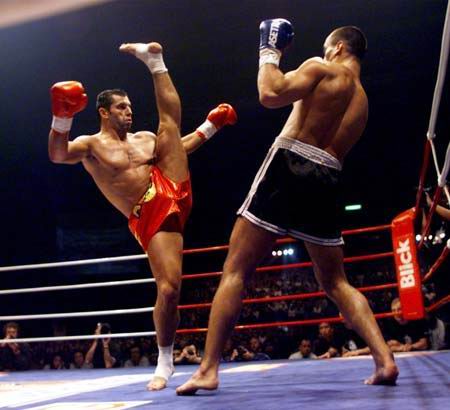
It was Kancho Ishii, who is the founder of Seidokaikan karate and the K-1, that was the main judge in this fight, and he kept judging the fight even, round after round, even do Satake was doing nothing else than running backwards defending himself, and taking every chance he could get to hold and grap Andy. After four rounds of fighting, by mixed karate knock down rules and K-1 rules with gloves, the four judges and Ishii still thought that the fight was to end by a draw, even do Satake got beaten from start to finish, like he was a mowing sand back. (Satake Vs Andy Hug Seido World Cup Karate 1993) The winner was to be found on Tameshiwari, which is breaking contents. Andy lost the breaking contest by one single piece of brick and Satake became new Seido World Champion.
I can't recall seeing a fight in my entire life, where the winner has been beaten so clearly? Again in Andy's career, he lost a very important fight and international title, because of corruptions and bad judgment. Andy did fight Satake again later in his K-1 career, and it was at the 1996 K-1 Star Wars and at the 1997 K-1 Grand Prix. Andy won both fights clearly and easy. (Tameshiwari contest) In my eyes, one of Andy's best K-1 fights in his long career as a kickboxer, was in 1994, at the K-1 Challenge against Branco Cikatic. Andy was new in the K-1, when he less than one year after his debut, was to battle the big K-1 Grand Prix champion Branco Cikatic, in a fight settle for five rounds.
No one gave Andy a chance against the Croatian giant, and even Andy himself knew that he was the underdog. Before Andy Hug was to face Branco Cikatic, Andy have only had two fights as an professional kickboxer, and that was against Ryuji Murakami, where Andy won on KO in the first round, and against Eric Albert where Andy won early in the 2nd round on KO. No one expected the fight to last five rounds, especially not Branco Cikatic or his coach Thom Harinck from team Chakuriki. But they where proved to be wrong, and never before in his interred career, did Branco had to dick so deep just to survive.
The fight was five rounds of true war; it was give and take in a tearing speed, felt with drama, action and standing counts to both fighters. (Andy Hug Vs Branco Cikatic K-1 1994) Andy had two weapons that shacked Branco, and that was his amazing lion heart and spirit, and his dynamics kicks. Andy's kick was all over Branco; especially his Ax kick was like a magnet to Branco Cikatic chin, hitting the target round after round, one more beautiful and faster than the other. But Branco was not the only one who got hit or hurt - Andy also had to cross his own limits to get past the five rounds, especially because he broken his nose in the 2nd round, and had trouble breathing threw out the fight, and in a long period after. Andy won the fight on a 3-0 judge decision, and it was properly the hardest and most beautiful fight, he ever did have in his K-1 career. 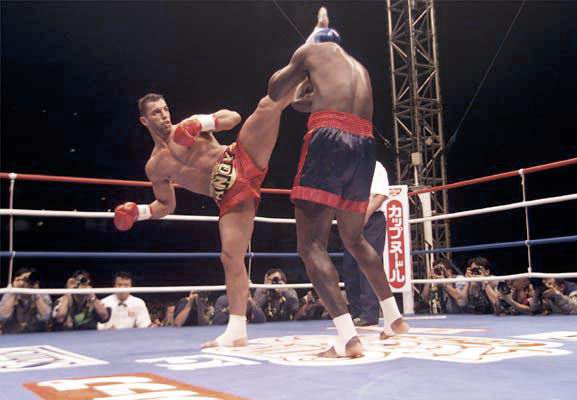
In 1995 at the K-1 Grand Prix and at the K-1 Revenge II, Andy had two scaring KO defeats to the South African fighter Mike Bernado. One year later at the 1996 K-1 Grand Prix, Mike Bernado and Andy Hug was standing in the final, facing each other for the 3rd time in there career, in a fight for the belt and K-1 championship. Mike Bernado is an excellent boxer and has very strong hands, but his kicking abilities and legs are very weak. A lesson that Andy had learned the hard way, so the recipe to victory for Andy was simple; it was all about mowing sideways and not backwards, throwing hard lowkicks and to keep away from Mike's punches. (Andy Hug Vs Mike Bernado 1996 K-1 Grand Prix) About one minute into the 2nd round, Mike Bernado is sent down by lowkick from Andy, and is about to be counted out by the judge. Mike manage to get up from the floor and is allowed to continue, even do his legs are stiff like wood. Mike Bernado mows slowly now, and he is trying to stay away from Andy, in the attempt to protect his legs for further pain.
But half way into the 2nd round, Andy makes the most brilliant roundhouse kick and technique ever seen in a K-1 Grand Prix final, hitting Mike’s left thigh right above the knee, and Mike fouls down, unable to get up. Andy become K-1 champion, the most beautiful way possible . (Andy Hug Vs Mike Bernado 1996 K-1 Grand Prix) Another beautiful fight in Andy's K-1 career, was against Peter Aerts at the K-1 1997 Grand Prix. Andy had earlier same year at the K-1 Kings, lost on a 1st round KO to The Dutch Lumberjack, in a fight where Andy was a slight notch above terrible in his performance.
Andy had just defeated Satake, in his first fight at the 1997 K-1 Grand Prix after only 15 seconds of fighting, and was now to fight Peter Aerts, who was the strongest and most feared fighter in the K-1 in the late 90's.
Andy had enormous respect for Peter Aerts, and was well prepared for the rematch, knowing that he had to work hard and concentrated, to win the fight and to settle the score. Andy's game plan was to bombard Aerts legs with lowkicks, and to stay away from Aerts long straight jab, combined with his dangerous roundhouse kick and knee strike to win the fight. Combination and technique that Peter in the past â€" and after the 1997 Grand Prix used to knock out Andy.
Andy's game plan turned out to be very successful, because at the end of the 3rd round, Peter Aerts thigh and legs was so hurt and damage by the many lowkicks from Andy, that he could barley stand on his feet. Andy won the fight by a big 3-0 decision, and was ready to defend his title against Ernesto Hoost the Grand final. When it came to spirit, hard training and dedication, no one in K-1 could be match or compared with Andy Hug. A former member of Team Andy in the period 1998-1999, and a respected friend of mine, Fredrik Hjelm from Sweden, has told me many interested stories from his time as a sparing partner to Andy. Fredrik Hjelm qualified himself to be a member of K-1 Team Andy Hug - by fighting the man himself at the Seidokaikan gym in Tokyo in 1997. 
Fredrik was one out of tree fighters, which Andy did use to be prepared for the 1998 K-1 Grand Prix. The two other fighters were Michael McDonald and Xhavit Bajrami. Andy had a big team, Arne Soldwell and Mariono Deflorin had also been used for sparring, getting Andy fit for the 1998 Grand Prix, but in the last preparation for the Grand Prix tournament, it was Fredrik, Xhavit and the black sniper McDonald there where going with Andy to the last training camp. (Andy Hug looking at Fredrik Hjelm sparring in the gym. Fredrik is to the left without helmet) It was very demanding being a member of Team Andy, because Andy's way of training was the Kyokushin-way, the hard way. Injuries and lots of ice packs was a part of the daily training, and everybody was committed 110%, giving all they got.
It is not about ever falling, but in rising every time we fall, Andy told his team. Fredrik was one who learned that even if you fall, it takes more than a samurai spirit to get up again. Team Andy were in a training camp in Okinawa, preparing for the K-1 1998 Grand Prix, when Andy was training to the limit, fighting sparing rounds against Fredrik, Mcdonald and Xhavit on shift. In a sparring round, Andy hit Fredrik so hard by a lowkick, that he cut his thigh muscle, and could barely walk for about 6 weeks. Fredrik had to leave team Andy because of many different curvier injuries. Other was told by Andy to leave because of lag of spirit or bad manners.
Andy did also get many injuries himself, but he never did talk about them, or showed that he had pain. Peoples pain threshold are very different, and some will say that it is an advance and also a sign of strength and will power, being able to repress pain - and continuing fighting even do you have curvier injuries? My personal point of view is, that everything has it price, and sometimes the price is too high compared of what you are gaining. What is a victory compared with getting permanent injuries? 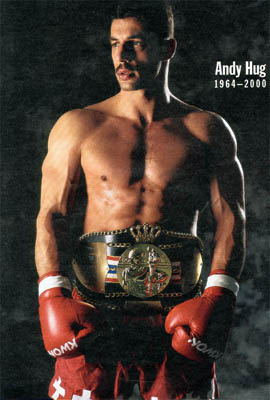 It is no secret that Andy had an enormous will, spirit and pain threshold. In his fight against Ernesto Hoost at the K-1 1997 K-1 Grand Prix final, Andy had serial broken bones in his left foot from the beginning of the fight. Still Andy mange to fight Hoost hard and even for tree hard rounds. Many would have quitted in pain, but quitting was never an option for Andy. I often get the thoughts that, what if Andy had listened to his body and the symptoms, when he started becoming seriously sick. Would he been around us today, because the doctors then would have discovered his tumor and leukemia in time?
It is no secret that Andy had an enormous will, spirit and pain threshold. In his fight against Ernesto Hoost at the K-1 1997 K-1 Grand Prix final, Andy had serial broken bones in his left foot from the beginning of the fight. Still Andy mange to fight Hoost hard and even for tree hard rounds. Many would have quitted in pain, but quitting was never an option for Andy. I often get the thoughts that, what if Andy had listened to his body and the symptoms, when he started becoming seriously sick. Would he been around us today, because the doctors then would have discovered his tumor and leukemia in time?
All people that have the chance to meet Andy in person, my self included, are all talking about Andy Hug big open heart, warm smile and his charisma. Andy Hug was to many a mentor in the ring, but also a friend and role model in life as a human. Andy had many friends; even some of his biggest opponents in Kyokushin and in the K-1, were his nearest friends. The tree time's K-1 champion Peter Aerts was privately a very near friend of Andy and they did meet privately at special occasions, as Andy also was invited to Peter Aerts wedding.
In Kyokushin karate one of Andy's dearest friends, was the Dutch champion Michel Wedel. When Wedel got his degree and became professor of Marketing Research, at the Department of Marketing and Marketing Research at the faculty of Economics, in the University of Groningen in Holland. Andy was there to celebrate his friend, and to honor him.
Family, friend or fan, Andy is still sorely missed by many people. All over the world, people is honoring Andy and paying him respect, at every given chance, for what he accomplishes, for who he was and for what he gave us. It is difficult for me to find and ending to this article, because how do I end story - about a human that no longer is around, but always will be in my heart and in my life? As Ilona Hug says : If you close your eyes, you can fell, he is around us.
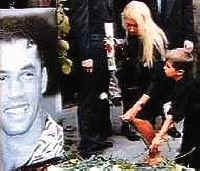
Ilona and Andy have the same positive way of thinking, because in Andy's last message and official letter to the press and to his fans, less than two days before he died; he says that he will fight his illness, and one day he will appear with us again. Sadly Andy is no longer among us, but he will always be around. Rest in peace and god bless you Andy Hug!
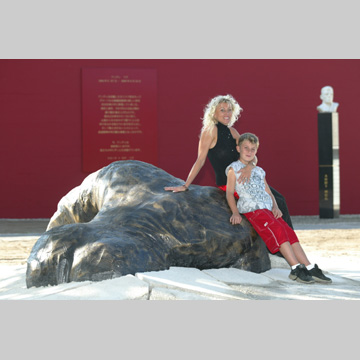
My warmest thoughts and respect goes to Ilona and Seya Hug.
Osu!
Oliver Sperling Denmark.
(Special thanks to Oliver Sperling sensei for his permission to use this article and photo's)
Andi Hug
{youtube}WRLR4LYlJL4{/youtube}
{youtube}tVYmr-Ti518{/youtube}
{youtube}KltbxRVP0gU{/youtube}
Andy Hug training
{youtube}Mbu-cp5x0lk{/youtube}
Andy Hug part 1
{youtube}tb6BbwKiPHQ{/youtube}
Andy Hug part 2
{youtube}S4NcTQWX7Rc{/youtube}
Andi Hug pure kyokushin
{youtube}_-bAvLvWPRE{/youtube}
Highlights Andy Hug part 1
{youtube}jhYwwkIFEcI{/youtube}
Highlights Andy Hug part 2
{youtube}yLdpW2fSBf4{/youtube}
Andy Hug
{youtube}Cqjmw2c2Kjk{/youtube}
Andy Hug
{youtube}DY0Y4QgcdPs{/youtube}
Andy Hug heaven
{youtube}UYL6ClXks_Q{/youtube}
Andy Hug vs Branko Cikatic (part 1)
{youtube}aCM7LlBaoOw{/youtube}
Andy Hug vs Branko Cikatic (part 2)
{youtube}YLhM21CAcVM{/youtube}
Andy Hug vs Ernesto Hoost
{youtube}WXI5yeequQM{/youtube}




